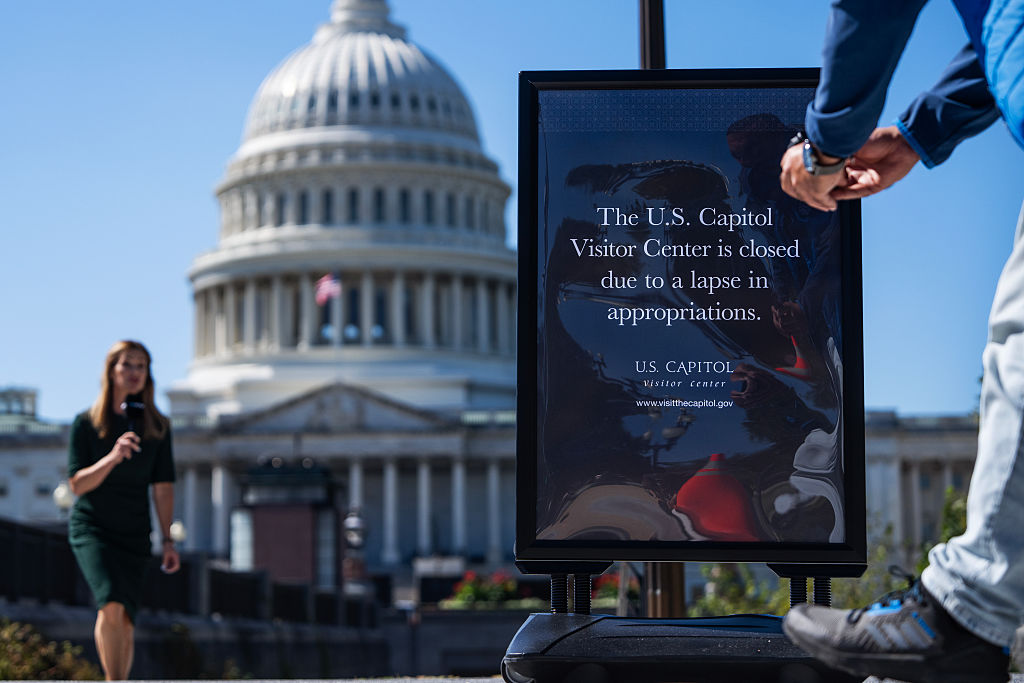This article is part of The D.C. Brief, TIME’s politics newsletter. Sign up here to get stories like this sent to your inbox.
The halls are alive with the sound of confusion.
As the first day of a government shutdown became Washington’s new reality, it sure seemed like not everyone in government got the memo. Congress’ tunnels were as buzzy as always, even if House Republicans were nowhere to be seen. Federal agencies seemed to be clacking through the paces even as so-called non-essential workers were supposed to stay away.
[time-brightcove not-tgx=”true”]
Around the District, for both federal workers and those just friendly with many, a constant question has emerged in this shutdown: Which “F” is coming for you? As in, furloughed or fired? For many, the uncertainty is paving the way to another “F”—frustration—amid a nagging sense that the understood rules of government shutdowns were being rewritten in real time. And in the absence of clear answers as to what those new rules are, there’s plenty of guessing going on.
During past shutdowns, who was furloughed and who would have to keep working without pay was clearer. Most workers, in fact, were told to stay home until the chaos was sorted out. Those deemed essential would have to continue working, despite not getting paid on a normal schedule.
This time, Trump and his deputies are warning the funding lapse will be used to dismiss whole pages of the federal directory. The White House’s budget chief told lawmakers on Wednesday that those final decisions could start to shake out in a day or two. Separately, Press Secretary Karoline Leavitt told reporters that she did not have an exact share of workers who would be on the chopping block, but confirmed layoffs were imminent.
Earlier in the day, Bloomberg Law reported that the patent office laid off about 1% of its employees—a move that may not be shutdown-related, given that the agency is self-funded. Nonetheless, it was widely seen as an opening move that had other feds scrambling for hard answers from bosses.
Amid all these threats, the number of workers who haven’t yet found themselves furloughed is raising eyebrows. Some are wondering if more is at play than the essentialness of their work. If someone is furloughed, the thinking goes, they could more easily be seen as extraneous, giving the Administration an easier path to arguing they aren’t needed at all. It’s why some around Washington suspect managers are designating fewer employees for furlough than previous standoffs. (It also helps that the denominator is smaller than in the past, given Trump already hollowed-out the government earlier this year, meaning the overall pool of feds is smaller.)
As a whole, the shutdown seems unevenly spread at best. While national parks, small business loans, and even the Statue of Liberty’s torch are in limbo, the Internal Revenue Service is open, at least for the first five days; in some cases, the Trump administration is using upgrade cash set aside in Joe Biden’s infrastructure bills to keep others working, which explains why just 2% of Treasury’s headcount had been told to stay home. Federal courts are running but it’s not clear how long their cash reserves will last. Food inspectors are sidelined but could be called back.
And while nine out of 10 workers at the Environmental Protection Agency were initially set to be locked out, there is reporting that suggests the number is far smaller.
For now at least, partisan instincts are raging and answers are in short supply. The Senate on Wednesday again failed to break the logjam and House Speaker Mike Johnson said his GOP-led chamber would not be voting until next week at the earliest. The Department of Agriculture and the Department of Housing and Urban Development have posted on their websites that this is Democrats’ fault, a brazen push into politics that breaks with past neutrality. An Undersecretary of State emailed employees a note blaming Democrats for workers’ situations.
Trump is leaning into his powers of impoundment, a maneuver through which the President simply decides not to spend money that Congress earmarked for programs. So-called pocket recissions are a step well beyond what past Presidents have done to tailor spending and could be a prelude to mass firings. The Interior Department, for instance, told employees to take home their phones and laptops to keep an eye out of dismissals.
Still, Washington is still figuring out just how big of a deal this shutdown will be. Some workers were milling about government offices on Wednesday looking for answers. The easiest one? Will their keycard still let them into their office suites?
Make sense of what matters in Washington. Sign up for the D.C. Brief newsletter.

